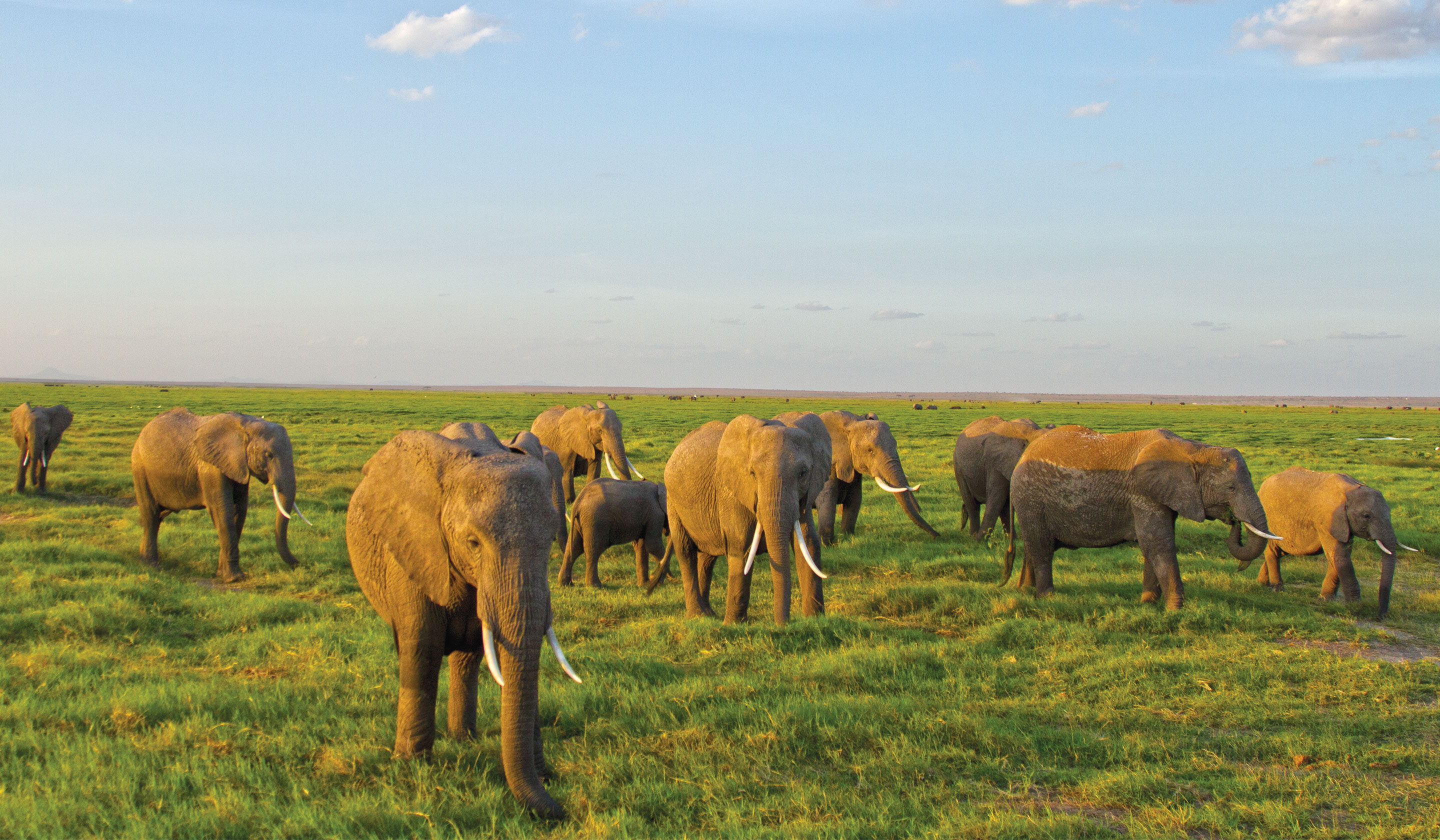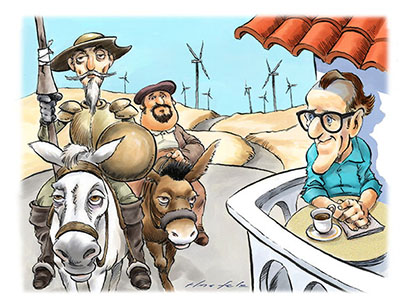On Location With BBC Earth

In my 20+ years with Tauck I've had some incredible opportunities to help develop new ways to travel. None have been quite as exciting as our partnership with BBC Earth and our newest venture, Earth Journeys.
Earth Journeys will take our already magnificent wildlife experiences to a new level for a fresh perspective and deeper understanding of our natural world. This exclusive collaboration will allow us to bring the expertise and perspectives of BBC wildlife filmmakers to our itineraries which will include amazing customized films from the BBC and the use of film-making technology in the field.
We recently embarked on a development trip to Kenya and Tanzania to try out some of these new concepts and find out what it is like to be on location with BBC Earth.
Our team included Kelly Rossiter, Tour Architect for Africa; Kristen Mack, head of Tauck Director Operations; and 3 amazing Africa Tauck Directors, Eric Croft, Susan Whalen and Bill Mercadante. We were also fortunate to have our own BBC Earth expert and film producer, Karen Partridge, join us.
 As with most Tauck development work, our long days are filled with meetings with hotel representatives, ground operators and local guides, site visits, vehicle inspections, and planning and routing logistics.
As with most Tauck development work, our long days are filled with meetings with hotel representatives, ground operators and local guides, site visits, vehicle inspections, and planning and routing logistics.
Of course, as with most Tauck trips, it's not all just planning. We do get to have a little fun too, and this trip was no exception.
After four days of meetings in Nairobi and Arusha, we drove south to Tarangire National Park. The park is the sixth largest in Tanzania and home to more African Elephants per square kilometer than anywhere else in the world. During the dry season, herds of up to 300 elephants scratch the river bed for underground streams, while migratory wildebeest, zebra, buffalo, impala, gazelle, hartebeest and eland crowd the shrinking lagoons. It's the greatest concentration of wildlife outside the Serengeti ecosystem – a smorgasbord for predators and their prey.
We spent just 24 hours in this breathtaking wildlife preserve, and in that short time experienced some of the most amazing up-close wildlife encounters, including a family of lions successfully stalking and killing a zebra from a plentiful herd grazing in the grassy plains.
It was here that we began to apply the field equipment and think about how some of these cool filmmaking techniques will take our amazing experiences to another level. We had great fun on the trial run using new 'bits of kit' (as they say at BBC), including a thermal imaging camera, parabolic microphone, GoPro and a motion-sensor camera trap.
All pieces of the kit were selected to reveal animals and behaviors that guests wouldn't usually get to see on safari. These are some 'tricks of the wildlife filmmaking trade' that offer a fresh perspective on the natural world. It was also important that these cameras and sound recorders were non-invasive – they allow us to view animals going about their daily routines and do not alter or affect their behavior.
filmmaking trade' that offer a fresh perspective on the natural world. It was also important that these cameras and sound recorders were non-invasive – they allow us to view animals going about their daily routines and do not alter or affect their behavior.
For our Tauck Directors, having the training and tools to know how to use these gadgets is a critical step in our planning process. Having Karen along with her wealth of wildlife filmmaking knowledge was a treat for us all.
Our first test was using the camera trap, a simple to use yet powerful device that captures images and video when detected by motion. The great fun of the camera trap is waking up in the morning and gathering around a laptop to see what has visited while we were all fast asleep. In just one evening around our lodge, we captured several bush buck, a baboon, a tiny dik dik, a spotted hyena, two honey badgers and a leopard right in front of the managers tent! The images we captured were astonishing, but the best part was the experience of bringing everyone together for lively conversation about what happens during the nighttime, animal behaviors and views that you don't see while on safari during the day.
The next bit of kit was the thermal imaging camera. This amazing tool detects the heat from warm-blooded animals that can be viewed at dark during night drives. This camera really impressed on location. Not only did we have fun, our local guides also really enjoyed using it, some calling it a 'magic camera'.
 Another surprisingly powerful tool we used was the shotgun microphone, used for listening to the intense sounds of the park using a directional shotgun to accentuate noises from a distance away. We took turns wearing headphones at sunset and it was an incredibly immersive experience, amplifying not only the sounds you could hear with the naked ear, but sounds in the distance as well, all with amazing detail. A flock of birds flying overhead is not just a whoosh, but a cacophony of individual feathers producing a synchronized harmony. Frogs croaking, insects chirping, zebras whooping, all intelligent forms of communication. Are they warning each other of predators? Are they calling for their mates? Are they just saying hello? What we can learn about nature from listening closely is astonishing.
Another surprisingly powerful tool we used was the shotgun microphone, used for listening to the intense sounds of the park using a directional shotgun to accentuate noises from a distance away. We took turns wearing headphones at sunset and it was an incredibly immersive experience, amplifying not only the sounds you could hear with the naked ear, but sounds in the distance as well, all with amazing detail. A flock of birds flying overhead is not just a whoosh, but a cacophony of individual feathers producing a synchronized harmony. Frogs croaking, insects chirping, zebras whooping, all intelligent forms of communication. Are they warning each other of predators? Are they calling for their mates? Are they just saying hello? What we can learn about nature from listening closely is astonishing.
After our planning here, I know the combination of these gadgets and the BBC films are going to create a wonderful experience for our guests. There is still work to do before we operate our first trips next year, and we are off to an exciting beginning!
Africa is one of those destinations that you could visit again and again and have a different experience every time. Each time I go, I think that visit is the most astonishing; each park greater than the next; each encounter more moving… it's a destination that will open your eyes, touch your heart and change your life.
As I reflect on our short visit, sipping strong coffee that I brought home from a local market in Tanzania (helping me break through the lingering effects of jet lag), I realize how lucky I am. And I know I will someday return.
TEXT SIZE
